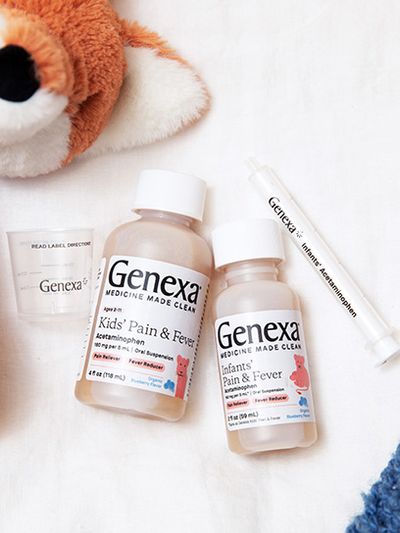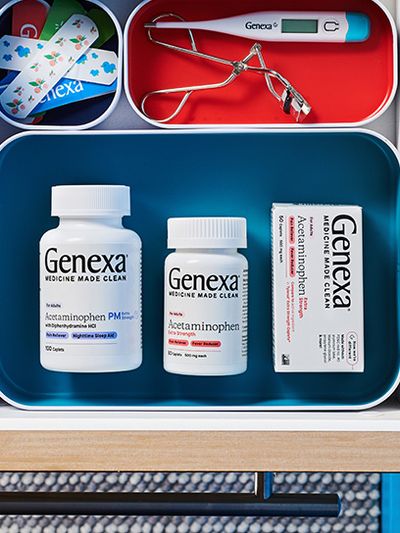What Is Saline Solution And How Does It Work?
Everything You Need To Know About Saline Solution
Table of contents:
Saline solution is easy to make at home and has a variety of uses in medicine. This article will provide you with an overview of what saline solution is, how to make it at home, and all of its different uses.
What Is Saline Solution?
On the most basic level, saline solution is simply a mixture of salt and water. Although saline solution is often referred to as normal saline, it is also sometimes called physiological or isotonic saline. Usually, saline solution is 0.9 percent salt or sodium chloride. This is the same amount of salt that is found in both blood and tears.
Saline solution is a powerful medicinal tool that can be used for an array of scenarios such as to clear your sinuses, clean wounds (especially the wound care needed after getting a new piercing), and rehydrating you if you experience extreme dehydration.
You can buy saline solution at the pharmacy, or you can make it at home, though this adds the risk of improper ingredient ratios and solution contamination.
Saline solution is usually used as a topical treatment at home but can be used intravenously in hospitals.
How To Make Saline Solution at Home
There are several ways to make saline solution at home using a stovetop or microwave to sterilize tap water, or using distilled water. This section will give you step-by-step instructions for each method so that you can choose the best method for your needs.
Before you begin preparing your saline solution, make sure you have a clean jar or bowl set aside to hold your solution once it is made. It is a good idea to thoroughly clean and sanitize the jar or bowl in the sink with warm water and soap before you make your solution so that no bacteria mixes with your saline.
Regardless of what preparation method you choose, you will need the following ingredients to make saline solution:
- Tap water or distilled water
- Pure salt or fine sea salt (make sure that it is iodine-free, avoid sea salt because it often contains minerals)
- A pot or bowl that is microwave-safe and has a lid
- A clean vessel, such as a jar or bowl, for the solution
- A measuring cup and teaspoon
- A mixing utensil
- Baking soda (optional, consider adding it to your solution if you want to make a sinus rinse)
Stovetop Method
To begin making your saline solution, bring two cups of water to a boil, cover the pot, and let it boil for about 15 minutes. Boiling your water will properly sterilize it and kill off any bacteria or microorganisms. After the water has boiled for 15 minutes, let it cool until it reaches room temperature.
Add one teaspoon of salt and a pinch of baking soda (this is an optional ingredient) to the water, and stir the mixture until the ingredients are fully dissolved. Once the ingredients are fully dissolved, you can use the saline solution right away or refrigerate it for up to 24 hours in an airtight container. After 24 hours, bacteria can start to grow and contaminate your solution.
If you want to make a smaller batch of saline solution, you can use one cup of water with one-half of a teaspoon of salt. For a larger batch, mix four cups of water with two teaspoons of salt.
Microwave Method
If you do not have access to a stovetop, you can make saline solution using the microwave. To do so, mix two cups of water and one teaspoon of salt in a microwave-safe container. As with the stovetop method, if you want a smaller or larger batch of saline solution, simply adjust the ratio accordingly. Once your water and salt are mixed in the container, microwave the solution for one to two minutes. Allow it to cool before placing it in a clean jar.
Remember that the stovetop method sterilizes the water better than the microwave method so, when possible, always use a stovetop.
Distilled Water Method
The most sterile way to make saline solution at home is with distilled water. Making saline solution with distilled water will also create a solution that will last for longer than 24 hours. You can buy distilled water at your local grocery store or pharmacy.
To make your saline solution, simply add eight teaspoons of salt to one gallon of distilled water. After mixing or stirring the solution, put it in the fridge in an airtight container where it can last for up to 1 month without risk of bacteria growing.
Tips For Making Safe Saline Solution
When making saline solution at home, it is important to make sure that no bacteria or other contaminants grow in your solution or enter during the preparation process.
In order to avoid this, you can use the following tips when making your solution:
- Thoroughly clean all of your materials (pot, bowl, vessel, stirring utensil, etc.) before you make the solution. If you’re worried that you won’t be able to clean them well enough by hand, put everything in the dishwasher before you prepare the solution, using the sanitize cycle if you have one.
- Avoid touching your solution with your fingers or hands. Given that your hands come into contact with so many different bacteria and viruses every day, it is best to avoid touching your saline solution directly with your skin. If, for some reason, you need to touch your solution, use gloves.
- Use a clean bottle to hold your saline solution. If you regularly make saline solution at home, make sure you clean out the bottle or jar that you store the solution in between each batch.
- After you allow your solution to cool, look at it to assess its consistency. If the solution looks cloudy or dirty, do not use it. Even if you follow all of the steps carefully, it is still possible for a solution to become contaminated, which can put your and your family’s health at risk.
Uses
As previously mentioned, there are several uses of saline solution, both at home and in the hospital. This section of the article will look at some of these uses and provide you with tips for using a homemade saline solution.
Nasal Irrigation
Arguably, the most common use for saline solution is as a sinus rinse. Saline solution can wash away allergens, mucus, and debris that is trapped in your nasal passages. For this reason, nasal irrigation can be a useful treatment for sinus infections, seasonal allergies, and general nasal congestion.
If you want to do a sinus rinse at home, you will need a neti pot, nasal bulb, or squirt bottle. Once you clean your nasal irrigation instrument, you simply need to tilt your head to one side and squirt saline solution into the opposite nostril (for example, if you tilt your head to the right, you want to squirt the solution into your left nostril). You can repeat the process in the other nostril, making sure not to tilt your head so far back that water drips down your throat.
Cleaning Piercings and Contact Lens
Saline solution is a powerful tool that can help prevent infection and promote healing. In terms of piercings, saline solution can help remove dead skin cells and other debris that might lead to the formation of crust or a trauma bump. It can be helpful to soak your piercing in warm saline solution for five minutes once or twice a day to lower the chances of infection.
If you use reusable contact lenses, you can soak them in saline solution to keep them free from bacteria. Given that contact lenses are very sensitive, it is important to use proper cleaning liquids that will not harm your eyes.
Washing Out Wounds
The salt in saline solution gives it antibacterial properties. For this reason, if you have a small cut or wound, pouring saline solution on it can help reduce the likelihood of an infection and clear away any bacteria or other substances, such as dirt. That being said, saline solution should not sting or burn when it is applied to a wound. If it does sting, the solution may contain too much salt.
Soothing A Sore Throat
If you have a sore throat, gargling with salt water can help relieve the pain and soothe the lining of your throat.
Hospital Uses
In a hospital, saline solution also has many uses. If you are extremely dehydrated, you may be given an IV injection with saline solution. Although you might expect to be rehydrated with water, saline solution is used because it contains sodium and chloride to balance electrolytes while replacing fluid loss. Treating dehydration with saline solution can also help stabilize blood pressure and heart rate in a person who is experiencing shock from dehydration.
Saline solution can also be used at home or in a hospital setting to irrigate the bladder of people with catheters.
Conclusion
Saline solution is a mixture of salt and water that contains 0.9 percent salt. It is easy to make at home and can be used to wash out wounds, soothe a sore throat, or clean piercings.
When making saline solution at home, the most important thing to remember is to properly clean all of the items you will use to make and store the solution in order to prevent any harmful bacteria from growing.






